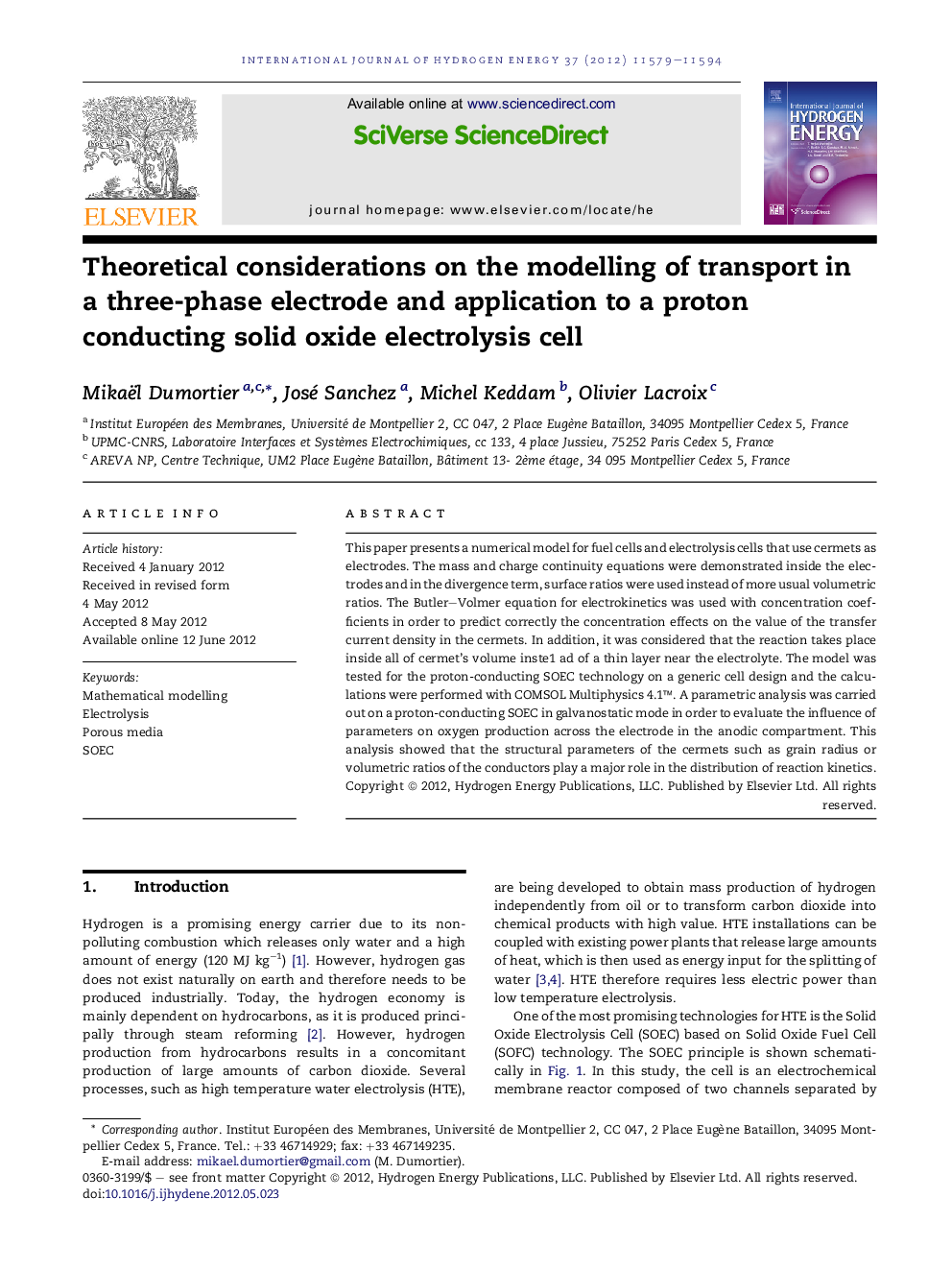| Article ID | Journal | Published Year | Pages | File Type |
|---|---|---|---|---|
| 1275025 | International Journal of Hydrogen Energy | 2012 | 16 Pages |
This paper presents a numerical model for fuel cells and electrolysis cells that use cermets as electrodes. The mass and charge continuity equations were demonstrated inside the electrodes and in the divergence term, surface ratios were used instead of more usual volumetric ratios. The Butler–Volmer equation for electrokinetics was used with concentration coefficients in order to predict correctly the concentration effects on the value of the transfer current density in the cermets. In addition, it was considered that the reaction takes place inside all of cermet's volume inste1 ad of a thin layer near the electrolyte. The model was tested for the proton-conducting SOEC technology on a generic cell design and the calculations were performed with COMSOL Multiphysics 4.1™. A parametric analysis was carried out on a proton-conducting SOEC in galvanostatic mode in order to evaluate the influence of parameters on oxygen production across the electrode in the anodic compartment. This analysis showed that the structural parameters of the cermets such as grain radius or volumetric ratios of the conductors play a major role in the distribution of reaction kinetics.
► Demonstration of continuity equations for mass and charge inside a cermet electrode. ► Reversible numerical model for proton and anion conducting SOECs and SOFCs. ► Reaction rate across the anode for position dependent fractions of metal and ceramic. ► Analysis of diffusion of oxygen back to the inlet of the anodic channel of SOECs. ► Use of compressibility factors for the modelling of fuel cells and electrolysis cells.
